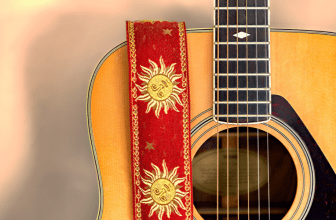The Hippie Van was an iconic bus produced by Volkswagen in 1950. The official name of the bus was Volkswagen Type 2 or Transporter. The bus wasn’t specifically targeting hippies, but became one of the favorite means of transport among hippies in the 1960.
This gave the Volkswagen Type 2 the nickname “Hippie Van”. The Minibus became an iconic symbol of the 1960s counterculture. People at the time often painted the bus in bright colors and added peace symbols, flowers and psychedelic patterns.
The distinct design of the bus and the bright colors and symbols made the bus stand out from other cars at the time.
History of the Iconic Minibus
Volkswagen, a German car maker, had launched the popular and similarly iconic Beetle car in 1938. The Beetle, or ‘Käfer’ in German, was officially called Volkswagen Type 1.
On March 8th, 1950, Volkswagen began production of the Hippie Van. But little did the German car maker know that the bus would become a symbol of counterculture within the next few decades.
The Hippie Van was supposedly invented by a Dutch businessman by the name of Ben Pon. He imported Beetles into the Netherlands and identified a gap in the market. The Beetle was a small car and practical for daily commute.
But it couldn’t transport many people or luggage. The Beetle wasn’t suited for transport. Pon realized there was a market for a bus or transporter and sketched out the rough concept for the bus.

Volkswagen then took the rough sketches and further refined them. Officially going into production in 1950, the bus gained many nicknames. Kombi, Splittie and Bully were some of the names.
But in the United States, the bus became increasingly known as “Hippie Van” because it was used by hippies to transport groups of people along with camping gear as well as supplies for concerts and anti-war demonstrations.
A Symbol Of Peace, Love and Counterculture
Many hippies painted the Volkswagen Type 2 in bright colors, covering it in floral or psychedelic patterns. It was also common practice to change the VW logo at the front of the bus into a peace symbol.

It is kind of ironic that Volkswagen became a symbol of counterculture. The company had ties to the National Socialists, like many other German car makers and companies at the time. Porsche, a popular sports car manufacturer today, goes back to Ferdinand Porsche.
Porsche was appointed by Hitler to create an inexpensive, mass-produced car for the German population: the Volkswagen. Volk means “people” in Germany, a term often used by Hitler in his speeches, referring to the German people.
Although Volkswagen, and the Beetle, were a brainchild of Nazi ideology and leadership, Volkswagen cars only became popular in the United States long after the Second World War ended.
The Beetle had difficulties gaining traction in the United States due to its link to Nazi Germany. But by the early 1970s this changed. Smart advertising campaigns managed to break the link between the Beetle and Nazi culture. By 1972, the Beetle surpassed the Ford Model T as the world’s best-selling car.
The Hippie Van, on the other hand, never reached mainstream adoption like the Beetle. But it nevertheless became a symbol of love and peace, despite Volkswagen’s ties to Hitler and World War II.
The Combi During the Woodstock Festival
The remarkable and distinct Volkswagen Type 2 can be spotted on many photos of the Woodstock 69 music festival.
The festival, which is an even bigger symbol for hippie-culture than the bus, attracted boatloads of young people from across the United States. Or should I say “busloads”?
Many people arrived at the festival in groups and used the Minibus as means of transportation to and from Woodstock 69.

The design of the bus made it light but spacious enough to transport several people with camping gear. This made the Volkswagen Type 2 the perfect festival bus.
This was in part possible because of the rear-engine configuration of the Minibus, a feature that other bus manufacturers copied from Volkswagen later on.
Is the Hippie Van for Sale? Does Volkswagen Still Produce It Today?
The iconic Hippie Van is still in demand. Although the bus experienced its prime time during the 1960s, it turned into such a cultural symbol that many people are still looking to acquire the Volkswagen Type 2.
Volkswagen halted production of their Type 2 model on the 31st of December 2013. The last remaining factory in Brazil that produced the “Hippie Van” shut down production.
Since then, nostalgic fans of the bus need to resort to buying second hand models of the mini bus. The good news is that the iconic Combi is still available for second hand purchase online.
Fans might get lucky on sites like eBay, Autotrader and Car & Classic.
However, it’s important to remember that the buses aren’t actively produced or maintained anymore. Finding replacement parts could be difficult, so don’t expect to have a derivable car long-term.
But some people might want to acquire a model for exhibition purposes, as decoration for an outdoor area or a hippie-themed party.
What’s the Hippie Vans Price?
Nostalgic lovers of the Hippie Van should expect to pay a price anywhere between $5,000 to $50,000 for a second hand bus.
The price gap is this big because different models of the Combi are in different conditions. A fully restored Minibus in good condition could easily sell for $25,000-$50,000.
An old and rusty Combi with a ton of miles on it could go for as little as $5,000-$15,000.
It’s also important to realize that there are different models of the Hippie Van.
Different Models of the Iconic Volkswagen Minibus: The Classic Hippie Van
In total, there are six generations of Combis. The first generation, or T1, went into production in 1950. It’s the oldest model of the “Hippie Van” and probably the most iconic one.
This model can be identified by the split windshield.
The T1 model was produced in Brazil until 1975. Production in Germany stopped in 1967. If you find a second hand bus with a split windshield, it’s most likely a T1 or original Minibus.
There are a few different versions of the T1 including the Samba, which has several more windows in the roof. The total window count of the Samba is 23. Other T1 models tend to have 13-21 windows.
There is even a pickup model of the original Minibus, which got hit by the 25% “Chicken Tax” by president Lyndon Johnson.
The second generation of the Volkswagen Minibus doesn’t have the split windshield. It was also slightly larger and heavier but still had the iconic “Hippie Van” look.
Newer Generations Of The Combi
Generations 3-6 of the Minibus lack the iconic look that many nostalgic lovers of the bus are after. If you want that hippie look, you need to buy a second hand model of the first or second generation of the bus.
The newer generations aren’t as round and curvy, making them look more clunky and industrial. Part of what gives the first and second generation models that hippie look is the rounded shape of the bus.

The fourth, fifth and sixth generation buses look more like hotel transporters. You know, the type of bus you would expect to be used during an airport transfer.
In 2001, Volkswagen launched the “Microbus Concept” which is a modern version of the “Hippie Van” and borrows visually from the T1. However, production was halted in 2007 and replaced with a more cost-effective model.
Does A Modern Hippie Van Exist?
Although Volkswagen halted production for the T1 and T2 classic Hippie Van, the car maker showcased a modern version of the Minibus during a care fair in 2017.
The new modern Hippie Van is fully electric and supposed to go into production in 2022.
The name of the model is Volkswagen ID. Buzz. Although it borrows noticeably from the classic Minibus, it probably doesn’t have that same flare that nostalgic lovers of the classic Hippie Bus are after.

According to CEO Herbert Deiss, the Volkswagen ID. Buzz received a lot of positive feedback and consumer interest when it was showcased in 2017.
The modern version of the bus is expected to become available for sale in 2024 in the United States.
Summary
The Volkswagen Type 2 remains one of the most recognizable and iconic cars ever produced. It became a symbol for peace and love for an entire generation in the 1960s. But even today, almost everyone recognizes the distinct look of the bus.
The Hippie Van features on album covers by musicians such as Bob Dylan and the Beach Boys. Fans of the band Grateful Dead used the van to follow the band around during its tour.
And probably most memorable, images of the famous Woodstock 69 music festival are full of the Minibus. Many people used the iconic bus as a means of transport to and from the music festival.







